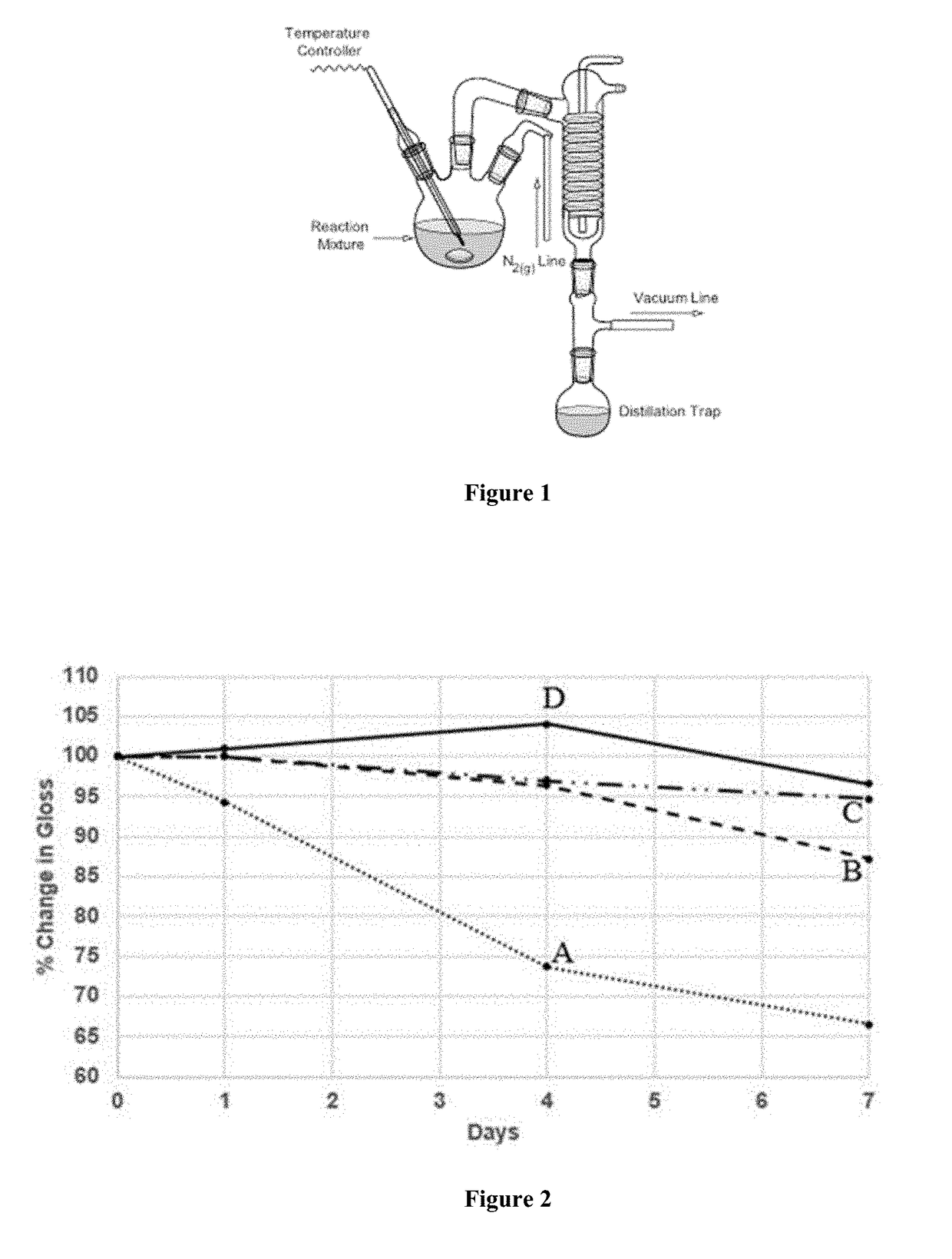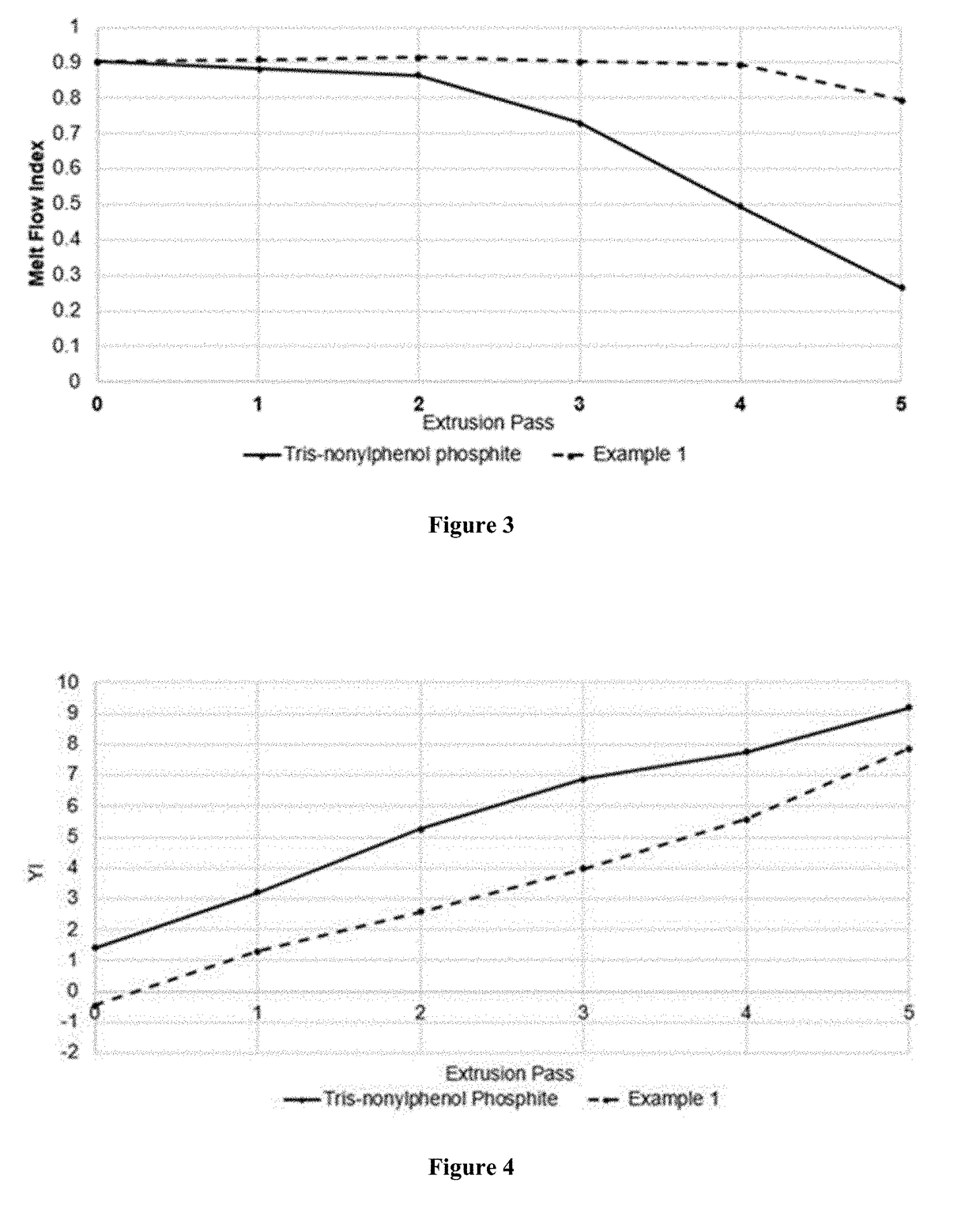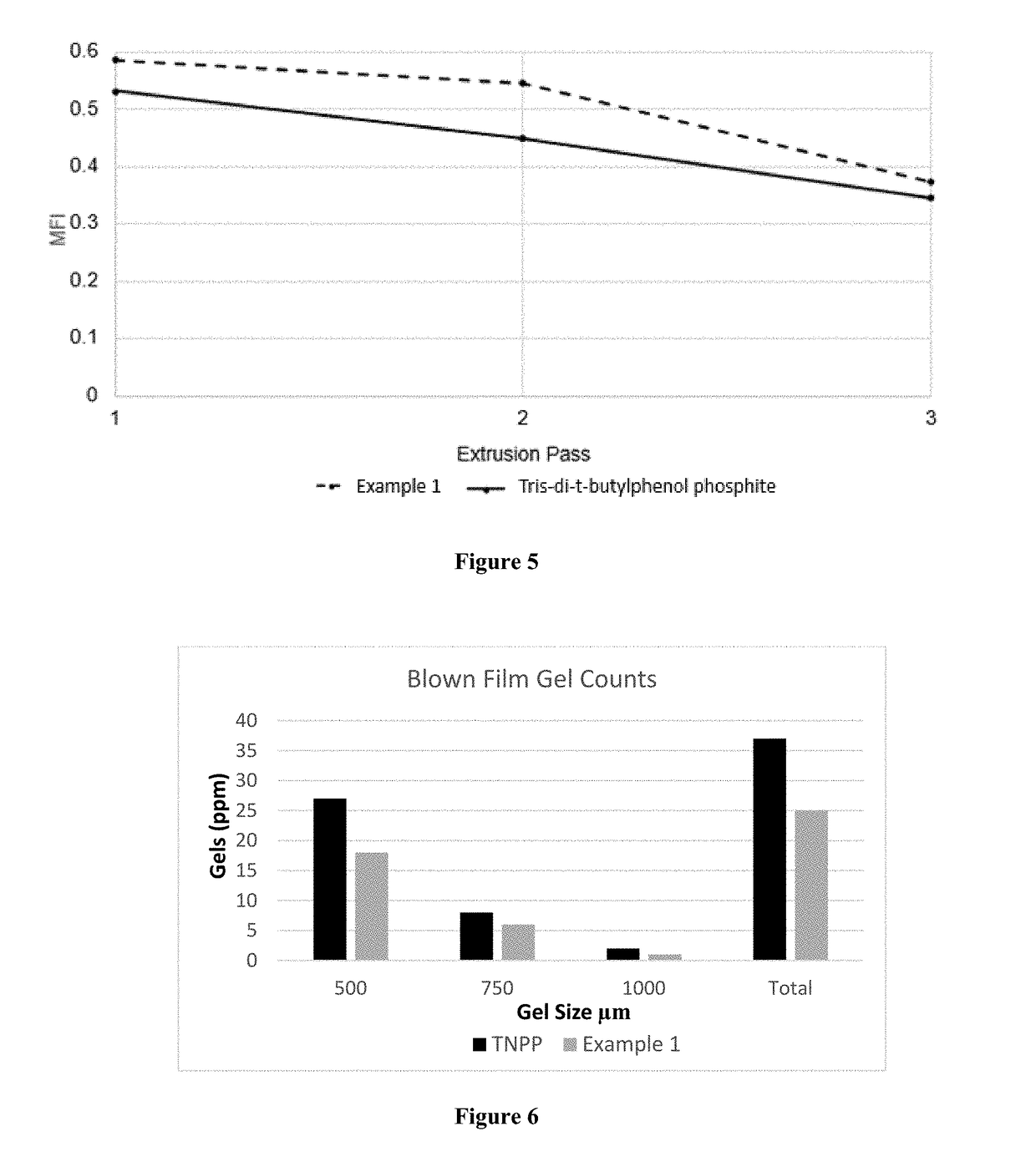Stabilized Polyolefin-Polymer Compositions and Related Methods
a technology of polyolefin and polyolefin, applied in the direction of synthetic resin layered products, layered products, chemistry apparatus and processes, etc., can solve the problems of tnpp being reluctant to be used in the formulation of plastic and rubber, unable to achieve stable tnpp, etc., to achieve better color and improve color stability
- Summary
- Abstract
- Description
- Claims
- Application Information
AI Technical Summary
Benefits of technology
Problems solved by technology
Method used
Image
Examples
example 1
Phosphite Standard Charges
[0150]The apparatus used consisted of a three-neck 2000 mL flask equipped with a stir bar, temperature controller, nitrogen gas line, and a condenser with distillation trap as depicted in FIG. 1. To the 3-neck flask triphenyl phosphite (527.6 g, 1.70 mol), tridecyl alcohol (662.0 g, 3.31 mol), and 4,4′-butylidenebis[2-(1,1-dimethylethyl)-5-methyl-phenol], BBMC, (289.6 g, 0.756 mol) were added. The mixture was stirred while heating to 50° C. under a nitrogen blanket. Once, the contents were will mixed into a cloudly, opaque single-phased solution, 1.6 g potassium hydroxide was added. The stifling mixture was then heated under nitrogen to 155° C. and then allowed to react for 1 hour. After 1 hour, the nitrogen line was closed and the pressure was then gradually reduced to 1 mmHg while increasing the temperature to 180-185° C. over a course of 2 hours. The reaction contents were held at 180-185° C. under vacuum for 1 additional hour at which point no more phen...
example 2
Phosphite with 20 mol % Excess BBMC
[0151]The apparatus used consisted of a three-neck 2000 mL flask equipped with a stir bar, temperature controller, nitrogen gas line, and a condenser with distillation trap as depicted in FIG. 1. To the 3-neck flask triphenyl phosphite (527.3 g, 1.69 mol), tridecyl alcohol (662.2 g, 3.31 mol), and 4,4′-butylidenebis[2-(1,1-dimethylethyl)-5-methyl-phenol], BBMC, (347.3 g, 0.907 mol) were added. The mixture was stirred while heating to 50° C. under a nitrogen blanket. Once, the contents were well mixed into a cloudly, opaque single-phased solution, 1.6 g potassium hydroxide was added. The stirring mixture was then heated under nitrogen to 155° C. and then allowed to react for 1 hour. After 1 hour, the nitrogen line was closed and the pressure was then gradually reduced to 1 mmHg while increasing the temperature to 180-185° C. over a course of 2 hours. The reaction contents were held at 180-185° C. under vacuum for 1 additional hour at which point no ...
example 3
Phosphite with 10 mol % Less BBMC
[0152]The apparatus used consisted of a three-neck 2000 mL flask equipped with a stir bar, temperature controller, nitrogen gas line, and a condenser with distillation trap as depicted in FIG. 1. To the 3-neck flask triphenyl phosphite (527.2 g, 1.69 mol), tridecyl alcohol (665.2 g, 3.32 mol), and 4,4′-butylidenebis[2-(1,1-dimethylethyl)-5-methyl-phenol], BBMC, (260.6 g, 0.680 mol) were added. The mixture was stirred while heating to 50° C. under a nitrogen blanket. Once, the contents were will mixed into a cloudly, opaque single-phased solution, 1.6 g potassium hydroxide was added. The stifling mixture was then heated under nitrogen to 155° C. and then allowed to react for 1 hour. After 1 hour, the nitrogen line was closed and the pressure was then gradually reduced to 1 mmHg while increasing the temperature to 180-185° C. over a course of 2 hours. The reaction contents were held at 180-185° C. under vacuum for 1 additional hour at which point no mo...
PUM
| Property | Measurement | Unit |
|---|---|---|
| Fraction | aaaaa | aaaaa |
| Percent by mass | aaaaa | aaaaa |
| Percent by mass | aaaaa | aaaaa |
Abstract
Description
Claims
Application Information
 Login to View More
Login to View More - R&D
- Intellectual Property
- Life Sciences
- Materials
- Tech Scout
- Unparalleled Data Quality
- Higher Quality Content
- 60% Fewer Hallucinations
Browse by: Latest US Patents, China's latest patents, Technical Efficacy Thesaurus, Application Domain, Technology Topic, Popular Technical Reports.
© 2025 PatSnap. All rights reserved.Legal|Privacy policy|Modern Slavery Act Transparency Statement|Sitemap|About US| Contact US: help@patsnap.com



